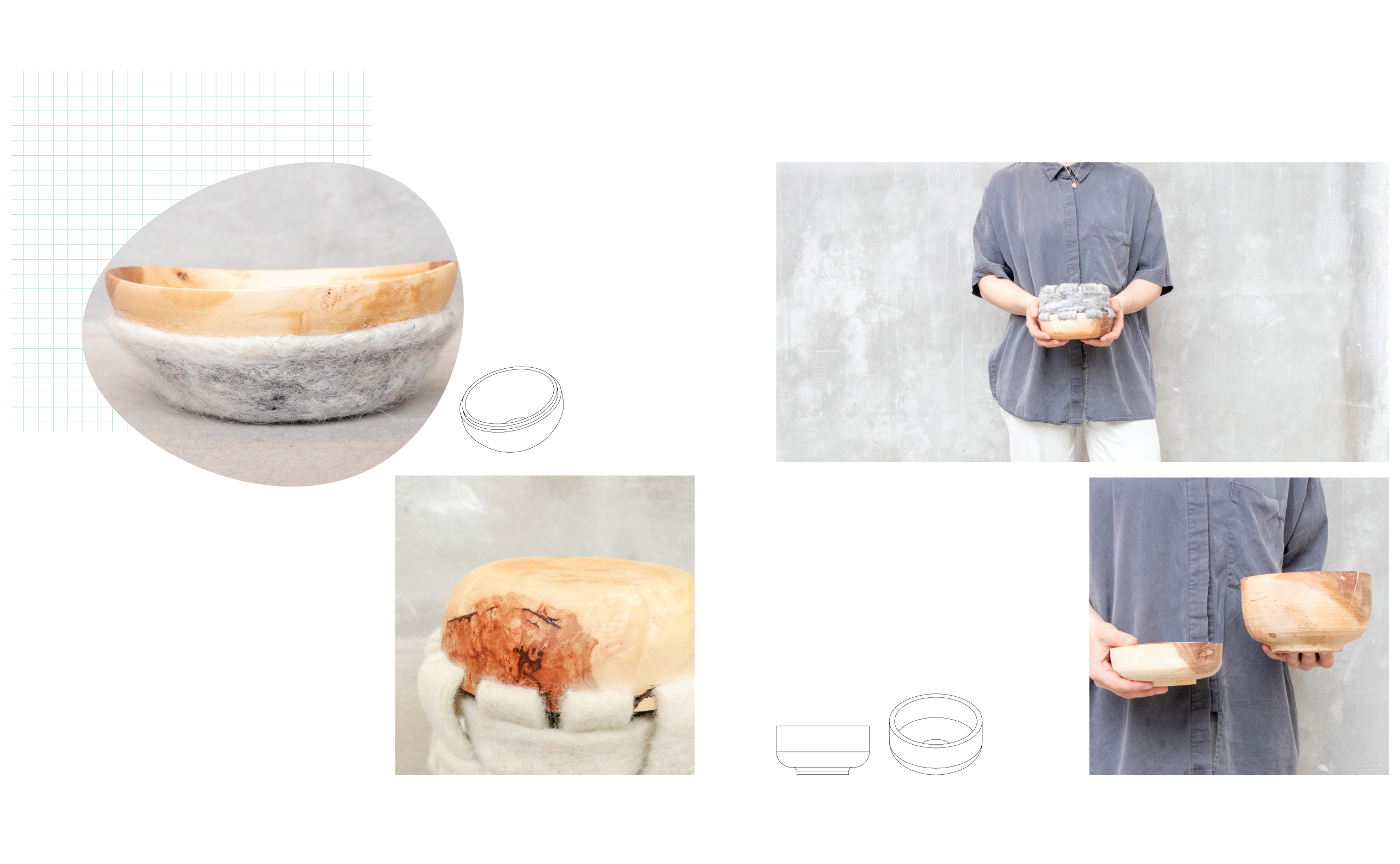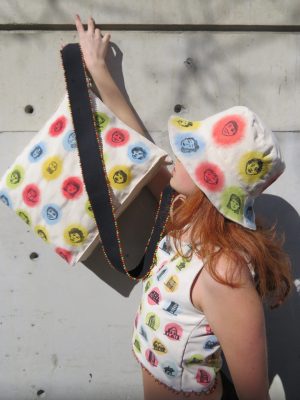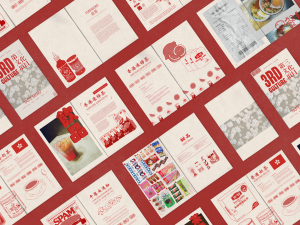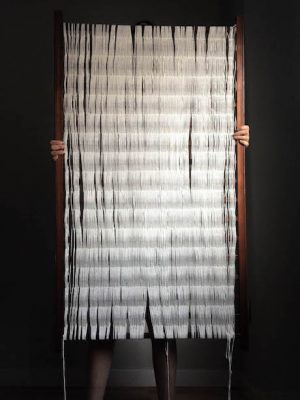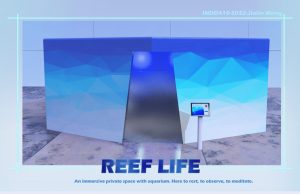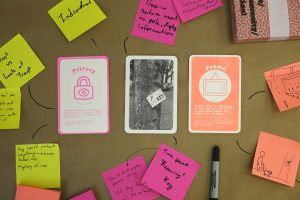FELTED FUTURES
Ajra Rose
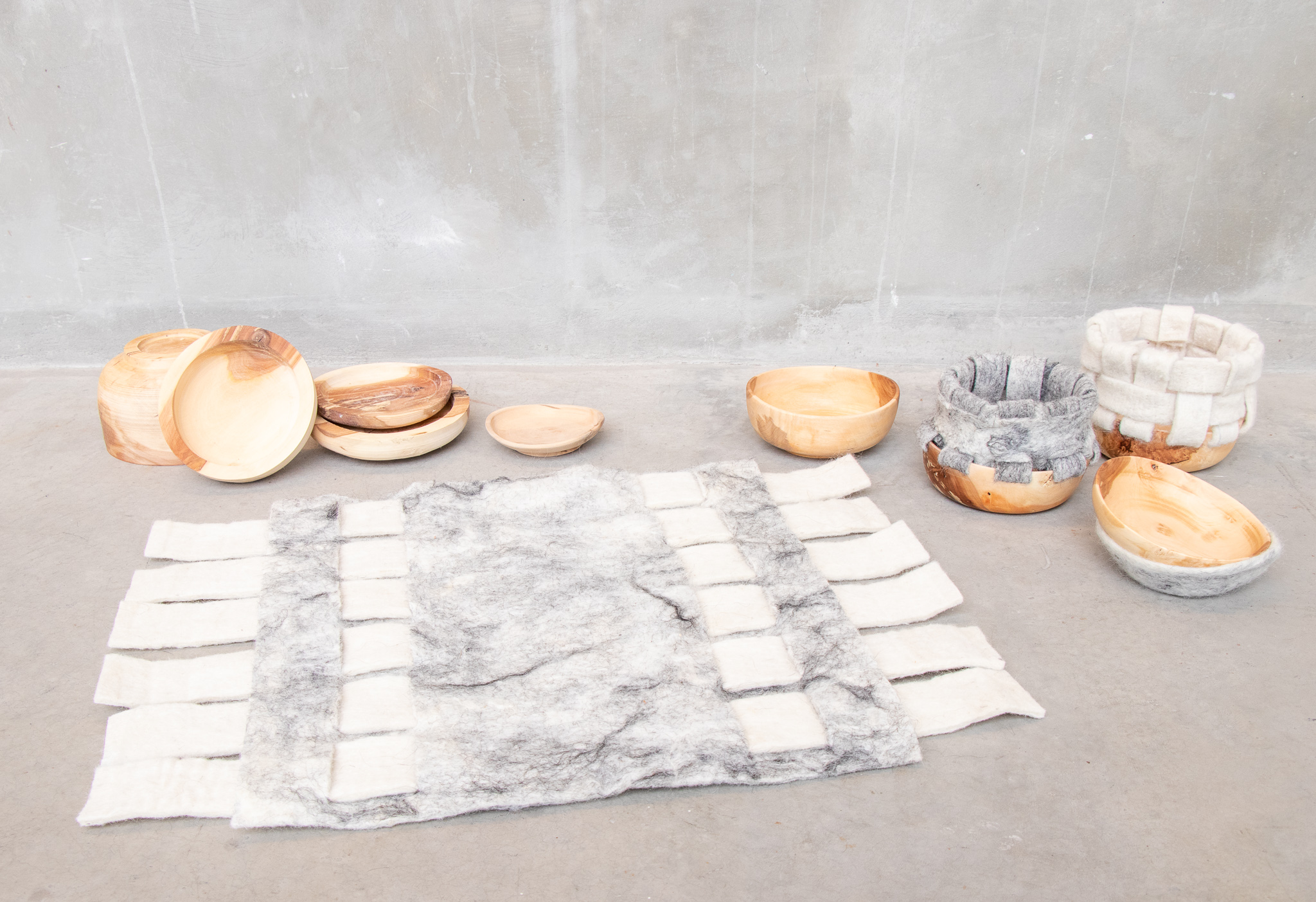
How can re-valuing locally sourced materials help support resilient communities?
FELTED FUTURES is a case study approach to strengthening local material systems through practical community networking and practice-focused methods of making. It aims to revitalize past methods in efforts to support the present and future.
Methods focused on throughout this project are felt making with raw wool from local sheep farmers and wood turning vessels that use storm fall wood from old growth apple trees. These two materials are explored individually and in combination, seeking to re-value local materials as they become crafted into objects.
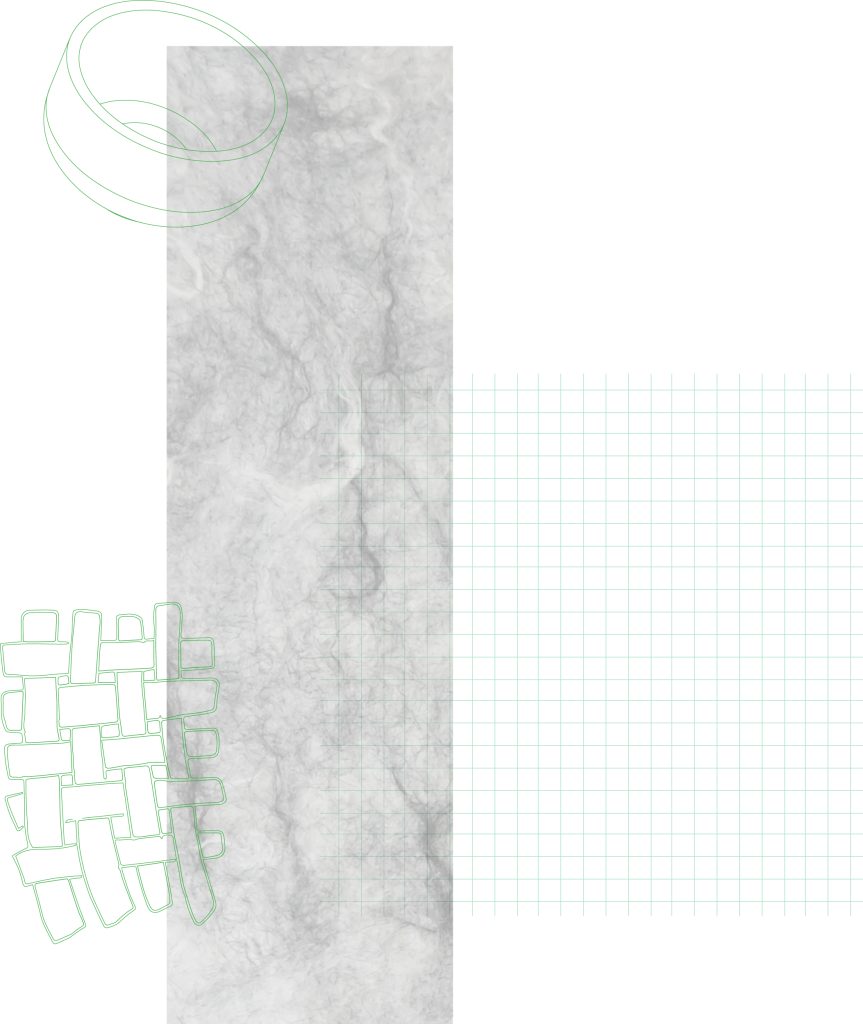
Why a case-study project?
Based around networking with farmers and makers, and skill-sharing for material processing, FELTED FUTURES synthesizes these learnings into a cohesive collection of objects that represent the opportunities present when makers engage with this model.
The current social and environmental situation is a challenge many of us are facing (especially throughout the current pandemic). Themes that are emerging through this are the importance of community support and locally sourced materials.
As a maker, I am re-engaging with the community that raised me. In this I hope it prompts others to engage in their own unique ways with any community they choose to be a part of.
This place for me is Salt Spring Island, BC, the ancestral and unceded traditional territory of the Hul’qumi’num and SENĆOŦEN speaking peoples.

Community networking + practice
The following circular value map and system was developed in the early stages as a guide for community networking, material processing, design synthesis and the making and sharing of specific outcomes. It acts as a loose framework for cyclical material interactions.
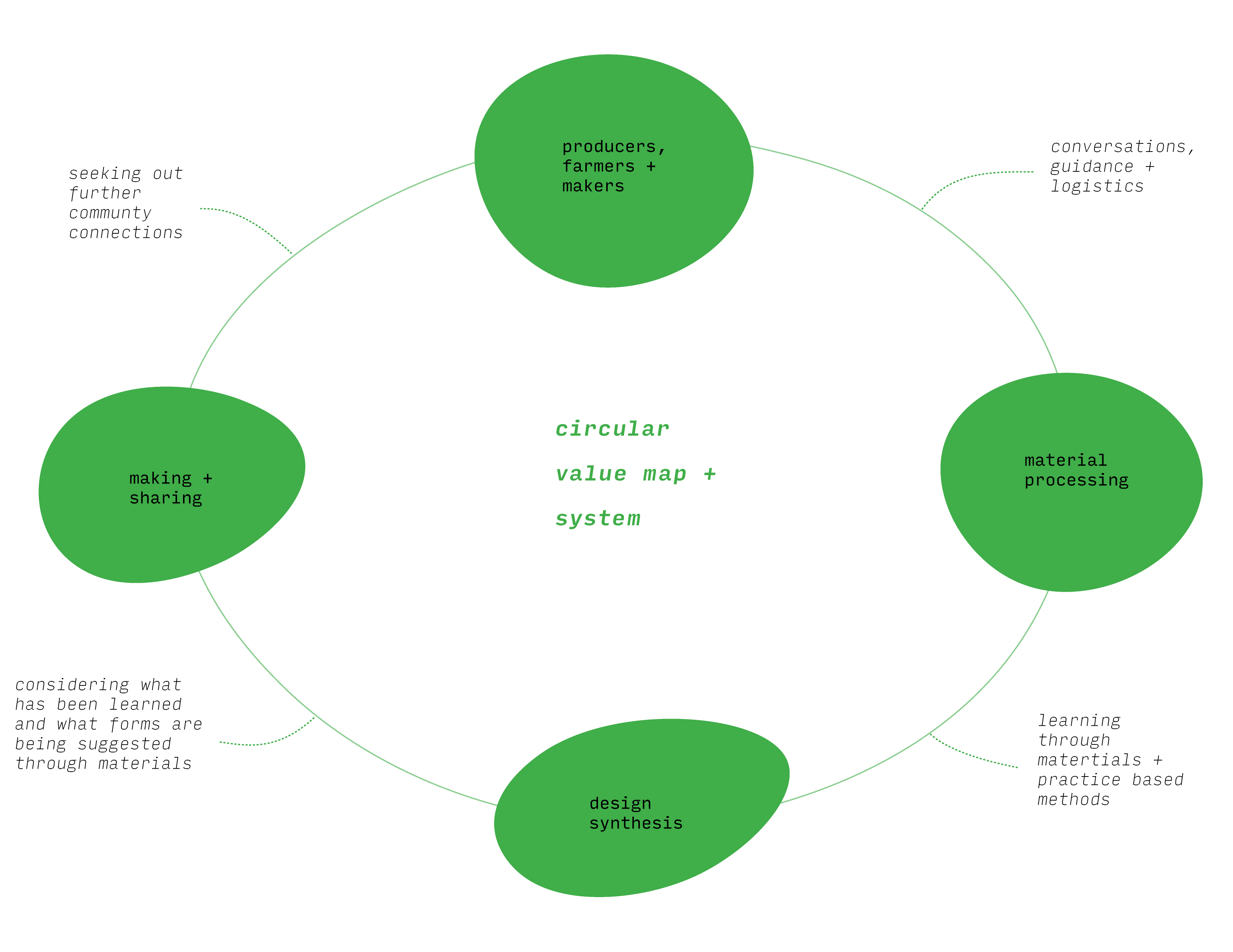

RAW WOOL: WET FELTING + LOOM FELTING
- felting is a historic process, some say people discovered it by chance. The methods of making felt change depending on the cultural heritage attached to it.
- Wool is a material that is inherently connected to a cyclical way of caring for the land and increasing biodiversity. If managed properly, sheep can aide in regenerative farming practices. Sheep typically need to be sheered bi-annually, in the process they provide makers with a versatile natural fibre.
- felt making is an effective way to use wool that is unusable for spinning (making yarn) due to lock structure and quality.
LATHE: WITH STORM FALL APPLE WOOD
- Turning wood is a long practiced craft. Turning green wood storm fall wood is a method of seeking value in wood that has parts that have decomposed, making it unviable for lumber and other uses.
- apple wood has long contributed to Salt Spring Island’s history, where there’s an abundance of century old apple orchards.
- when turning green wood it is a balance of control and relinquish of control. The nature of wood with knots and unruly grain means it will warp and take on its own form and identity as it drys.
